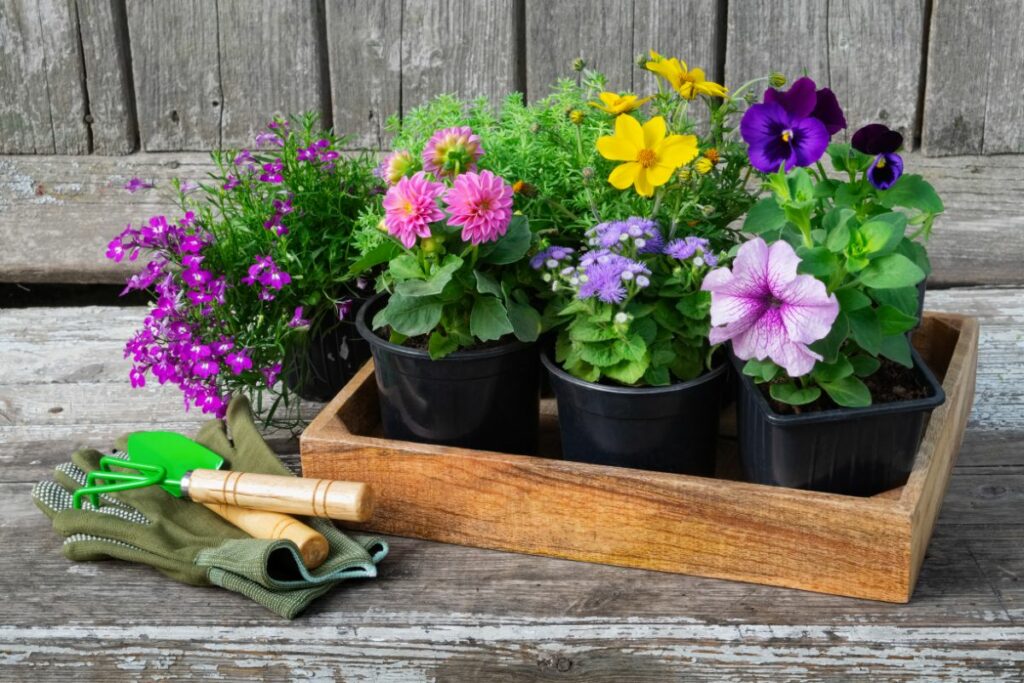Disclaimer: Our editors have used AI to create or enhance parts of this article and some images. All content has been fact-checked by our team to ensure accuracy.
Gardening is a rewarding activity that combines nature with creativity. However, embarking on the adventure without a plan can lead to a mishmash of colors and sizes that fail to showcase the beauty of your plants. It’s a common pitfall for beginners to select a variety of plants and containers, only to find the final arrangement lacks cohesion and visual appeal, with vibrant hues clashing and delicate blooms lost behind taller foliage.
To create a truly eye-catching container garden, it’s crucial to consider design principles as well as horticultural needs. Consideration of color schemes, plant heights, and pot styles can elevate your garden from a mere growing space to a stunning display of pot art. By applying a few fundamental tips, you can ensure that each plant is given the opportunity to shine, thereby transforming your garden into a proud testament to your nurturing and design skills.
1. Avoid Overcomplicating Color Schemes

Elegant Simplicity in Hues
Imagine the serene impression that white or sky-blue blooms can offer. These shades symbolize sophistication and can illuminate shadowy areas of a space.
Consider placing lilac hydrangeas, soft purple cornflowers, and snowy white cyclamens close by. Perhaps incorporate some vivid white chrysanthemums to further enhance the arrangement.
| Plant | Color |
|---|---|
| Hydrangea | Lilac |
| Cornflower | Soft Purple |
| Cyclamen | Snow White |
| Chrysanthemum* | Vivid White |
*Potential addition
Warm Pastels for Comfort
For those drawn to pronounced shades while still wishing to maintain subtlety, a palette reminiscent of cashmere could be ideal.
Embrace hues like blush coral or muted peach. These warm pastel tones are splendid for embellishing a vernal space with flora like roses and tulips harmonizing beautifully.
- Suggested Flora: Roses, Tulips
- Color Palette: Warm Pastels (Blush Coral, Muted Peach)
Lively Stained-glass Palette
Brighten a sun-drenched area in your domain with a collection of plants exhibiting fiery strawberry, zesty lemon, sapphire blue, and other vibrant shades.
These energetic tones can uplift spirits. Align tangerine gerberas, scarlet tulips, and verdant euphorbias to create a visually engaging mix.
Vibrant Plant Mix:
- Gerberas (Tangerine)
- Tulips (Scarlet)
- Euphorbias (Verdant)
Intensity with Darker Tones
Opt for a palette using deep purple, maroon, and copper for an impactful presence that comes alive with daylight.
Envision a border showcasing crimson dahlias alongside smoldering orange tulips. Such a combination can captivate passersby with its striking contrast.
Dark-toned Flora:
- Dahlia (Dark Red)
- Tulip (Burnt Orange)
Employ these guidelines to fashion a color scheme that reflects your personal flair and creates the desired ambiance in your surroundings.
2. Plant Compatibility Considerations

- Align bloom periods: Ensure your chosen plants flower simultaneously for a cohesive display.
- Summer pairings example: Dahlia enthusiasts can plant them alongside Salvias to ensure a vibrant summer garden.
- Bulb options: Consider summer-flowering bulbs like Gladiolus to enhance your selection.
Remember, coordinating bloom times is essential for a harmonious and visually appealing garden.
3. Choosing Summer-Resilient Plants
Before selecting your green companions from the nursery, verify their ability to weather warm temperatures. Mixing resilient petunias with less hardy fuchsias often leads to a loss of the latter.
Consider last season, robust dahlias and vibrant zinnias complemented by hardy climbers such as thunbergia and cascading petunias, which all flourished. Choosing such varieties ensures a garden that remains lively throughout the summer.
- Assess Plant Hardiness: Ensure compatibility with your region’s climate.
- Successful Combinations from Experience:
- Dahlia
- Zinnia
- Thunbergia (Climbing)
- Cascading Petunia
4. Combine Varied Plants in a Single Pot
When planting in a 12-inch pot, aim for a luxurious appearance by incorporating multiple tulips, with an optimal count of around 30 bulbs. While general recommendations suggest planting 22, a denser arrangement has its own appeal.
Embrace the dynamic “thriller, filler, spiller” strategy for planting:
- Thriller: Choose a standout plant as the centerpiece. Marigolds or geraniums can be striking choices.
- Filler: Opt for foliage plants to create depth and texture. Dusty miller is a great example.
- Spiller: Include cascading plants like petunias to gracefully overflow along the pot’s edge.
Keep in mind, the fuller the container, the higher the need for water and nutrients. Your plants will thrive with attentive care.
Essential Planning for Successful Container Gardening
- Design Ahead: Be clear about your desired outcome before shopping to manage costs and avoid excess.
- Color Coordination: Play with hues and tones for a visually appealing display.
- Plant Placement: Masterful arrangement amplifies the charm of your pot garden.
Follow these strategies, and you’re on track for a delightful garden project.